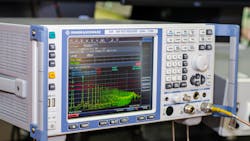Understanding EMI Filters: The Bare Essentials (.PDF Download)
Before we discuss electromagnetic-interference (EMI) filter basic information, let’s first understand why we need EMI filters in electronics.
One important reason designers need EMI filters is that regulatory agency requirements for RF/wireless devices for use in the USA (FCC), Canada (IC), Europe (CE), and many other countries dictate that radiated and conducted emissions be constrained below specified limits and must pass immunity/transient requirements. Designers need to understand that EMI filters will help in meeting immunity and fast transient requirements as well as radiated emissions to achieve a robust design.
